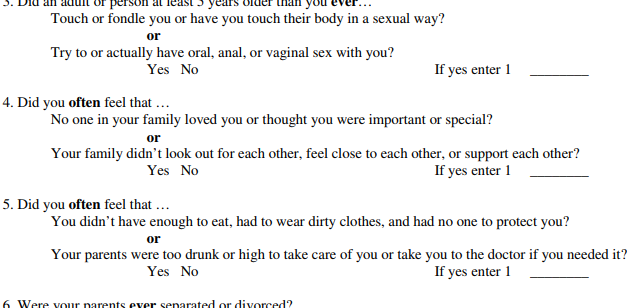Foster care may come with a stigma, especially for older youth. In the minds of many, foster children can be thought to be “too much to handle” or unruly. Whether this is because of special medical needs or certain behavioral issues, the lives of these children are consistently misunderstood. As child welfare professionals have come to learn, many of the stereotypical behaviors people believe are innate components of foster children are the result of the way these children have been treated. As they grow from toddlers to teenagers, the childhood trauma they’ve experienced can and often does affect their behaviors and needs.
Foster Children Experience Childhood Trauma
Foster children experience trauma far more often than others, and this trauma can shape not only their behavior but also their worldview. Post-traumatic Stress Disorder (PTSD) occurs in foster children at very high rates – a grim testament to their experiences. To give context to – and promote understanding for – their situation, it is important to know how trauma functions for children in care and what states can do to prevent these traumas before they can happen.
Child psychologists and child welfare professionals have been working to understand trauma in foster children for years. The result of this work is the Adverse Childhood Experiences (ACEs) Scale. After taking a brief questionnaire and tallying points, respondents will receive an ACEs Score – a number representing the number of Adverse Childhood Experiences they’ve had. Below is an example of the ACEs Questionnaire:
51 percent of the children in the child welfare system who have taken this questionnaire have had four or more ACEs, while outside of foster care, only 13 percent of children had the same. According to a 2017 Generations United study, “Children in foster care are at least five times more likely to have anxiety, depression and/or behavioral problems than children not in foster care.”
Preventing Childhood Trauma and ACEs
As adults, people can find relief from their trauma through a number of practices – mindfulness meditation, yoga, EEG neurofeedback (click here for more information) , EMDR therapy (click here for more information), etc. – but due to either inability or a lack of understanding, children are often held hostage by their traumatic experiences. Ultimately, to provide the best outcomes for children, it’s up to parents and policymakers to prevent trauma whenever possible. Liz Cox, Executive Director of Prevent Child Abuse Iowa, recommends some pathways to help prevent adverse childhood experiences:
Develop a Common Language
Cox says, “ACEs conversations create a collective understanding of what trauma and toxic stress are and what it means for the developing brain, social skills, and emotional development.” ACEs can result in more than just psychological effects, and being able to discuss the nature of ACEs and their effects will help to build a community that can better address the needs of its children.
Create Prevention-oriented Policy
“Part of community infrastructure involves creating policy. Reducing ACEs requires collaborative work further upstream in prevention – especially in the areas of sexual abuse and neglect,” Cox writes. Ultimately, policy is the way states have a direct impact. With each new policy decision, the lives of thousands of children in care are affected. If the community around these children can’t come together to research and develop new, effective policies that can help keep families together, the foster care system will only grow.
Fund Evidence-Based Intervention
In-home services that can help prevent foster care placement are crucial to resolving this issue. By helping families who have shown a need for assistance, whether it’s through parenting classes or drug rehabilitation, states can prevent children from ever entering into foster care. On this note, Cox says, “Proportionate funding of evidence based prevention – like parenting classes, sexual abuse prevention training for teachers, respite care, home visits, and community capacity building – is an investment that strengthens families and reduces the demands on foster care systems.”
Addressing Childhood Trauma Across the Country
To this end, the federal government recently passed the Family First Prevention Services Act (FFPSA). As FAFS has reported previously, the FFPSA works to help people involved in a child’s life before foster care is considered an option. By reducing reliance on congregate care facilities, the FFPSA opens up funding to states for services that can strengthen families at risk of extended involvement with the child welfare system. According to a 2014 study on evidence-based elements of in-home services, “the goals of in-home services are to stabilize the family and ensure the safety and well-being of the children in the home in order to prevent placement or re-entry into foster care.“
This same study points to the importance of family-centered practices that focus on the family system as opposed to a single individual (i.e. a child). Now, states can find the funding they need to implement such services. Under the FFPSA, for up to one year, services like mental health or substance use treatments and skill-based programs are available for those who need them. These services must meet the criteria set forth in the FFPSA, which, in summary, require the program to be tailored to each individual involved, be trauma informed and be a proven and safe method of treatment. In fact, many states already have in-home or family stabilization services available.
In Kentucky, for example, the use of Sobriety Treatment and Recovery Teams (STARTs) addresses substance use issues in families before the state’s child welfare system becomes involved. This program is so effective, other states like Indiana, New York and Georgia have begun implementing it. STARTs are composed of up to four pairs (called “dyads”) of specially trained caseworkers and family mentors who “have at least three years of sustained recovery and personal experiences that sensitize them to child welfare issues.”
Maintaining small caseloads, the dyads interact directly with families multiple times a month and can refer them to additional treatment services (mental health, domestic violence, etc.) as well as other forms of assistance (transportation, parenting, medical, etc.). With this preventative approach, the START program has proven to be incredibly effective. According to the Addiction Policy Forum, “Children in families served by START were half as likely to be placed in state custody as compared with children in a matched control group (21 percent and 42 percent, respectively). This outcome also results in cost effectiveness—for every $1.00 spent on START, Kentucky avoided spending $2.22 on foster care.”
In New Jersey, Family Success Centers (FSCs) are one of the main preventative services offered to families in need. According the Department of Children and Families website, “Family Success Centers are ‘one-stop’ shops that provide wrap-around resources and supports for families before they find themselves in crisis.” These resources can include child abuse prevention services, life skills training, housing services, parent education and parent-child activities. To further assist families in need before crisis hits, there are also county-based Family Support Organizations (FSOs). These organizations help to provide direct family-to-family support to caregivers of children with emotional and behavioral issues.
To learn more about ACEs and to better understand trauma in foster care, click here or to see how the definition of ACEs may expand, click here.
To see how the FFPSA is prioritizing prevention services, click here.
To connect with New Jersey’s Family Success Centers, visit the county directory here.
To find the Family Support Organization for your New Jersey county, visit the DCF website here or call 1.877.652.7624



Pingback: Childhood Trauma and It’s Negative Impact on Education – CrimLawandPolicy